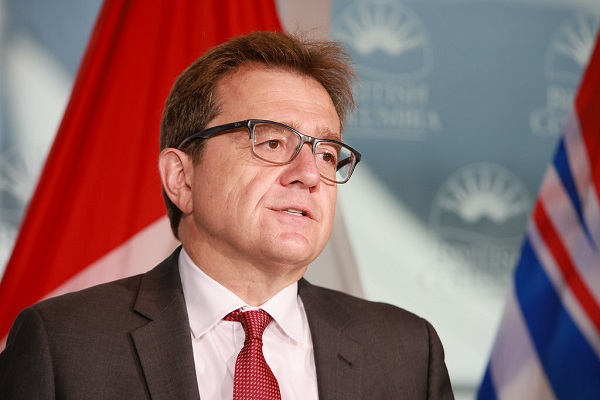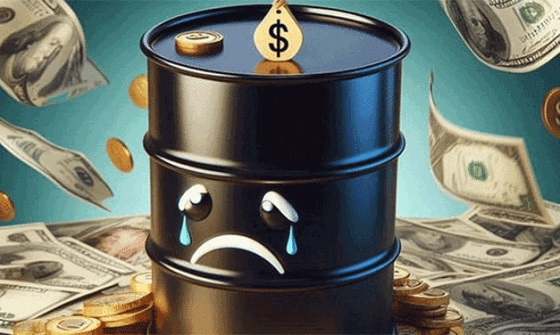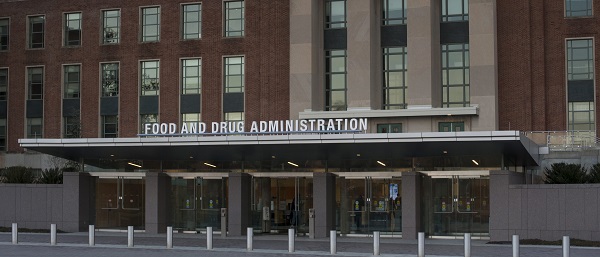Business
Ottawa’s emissions cap another headache for consumers and business

From Resource Works
Ottawa’s emissions cap for oil and gas aims to cut emissions but risks raising costs for consumers and disrupting industry stability.
Ottawa has brought down a new emissions cap for the oil and gas industry, with a mandate to reduce emissions by 35 percent from 2019 levels by 2030 to support the federal government’s climate targets. While the federal government is celebrating the cap as a big step towards a more sustainable future, it is going to make life harder for consumers and businesses alike.
This cap is coming in at a time when the oil sector is finally gaining greater stability due to the expanded Trans Mountain pipeline (TMX), and the mandate would undermine that progress and press greater costs upon households and industries that are already adjusting to high inflation and uncertainty in world markets.
Now that TMX is operational, Canada’s oil producers have grown their access to international markets, most importantly in Asia and the West Coast of the United States. Much-needed price stability now exists for Western Canadian Select (WCS), cutting the discount against the U.S. West Texas Intermediate benchmark, enabling Canadian oil to compete more effectively.
Newfound stability means that Canadian consumers and businesses have benefited from slightly lower prices, and that industry has grown less dependent on a more limited domestic demand. However, Ottawa’s emissions cap does threaten this new balance, and the sector now has to deal with compliance costs that could be passed down to consumers.
In order to meet the cap’s targets, Canadian oil producers must heavily invest in carbon capture and storage (CCS) technologies, which is costly but essential. Major CCS projects include Shell’s Quest and the Alberta Carbon Trunk Line, both of which are already operational.
The Pathways Alliance is a coalition of six major oil sands companies and is preparing to invest in one of the world’s largest networks for carbon storage. These efforts are crucial for reducing emissions, despite requiring vast amounts of capital.
Those in the industry are worrying that the emissions cap will push resources away from production and, instead, towards compliance, adding costs that will be borne by fuel prices and other consumer products.
Ottawa has portrayed the cap as an essential measure for meeting the federal government’s climate goals, with Environment Minister Jonathan Wilkinson labeling it “technically achievable.” Nonetheless, industry players argue that the timeline does not align with the practicalities of scaling CCS and other strategies aimed at decarbonizing.
Strathcona Resources executive chairman Adam Waterous pointed out the “stroke-of-the-pen” risk, in which shifting political landscapes imperil ongoing investments in carbon capture. Numerous oil producers feel that without certainty in carbon price stability, Ottawa’s cap will result in an unstable business environment that will push investment away from production.
Business leaders do not share the federal government’s optimism about the cap and see it as a one-sided approach that fails to reckon with market realities. The Pathways Alliance, which includes companies like Suncor Energy and Canadian Natural Resources, has been frustrated in its multiple attempts to get federal support to fund its $16.5-billion CCS project.
Rather than imposing these new limits, energy industry advocates argue that the government should provide targeted incentives like “carbon contracts for difference” (CCfDs), which help to stabilize carbon credit prices and reduce financial risk among investors. These measures would enable the energy sector to decarbonize without putting a greater burden on consumers.
The cap’s timing also raises concerns about the Canada-U.S. relationship. Canada has traditionally been a stable supplier of energy and helps to bolster U.S. energy security. However, as the U.S. increases its reliance on Canadian oil, the cap could disrupt this trade relationship. Lowered production levels would leave the economies of both the U.S. and Canada vulnerable, potentially disrupting energy prices and supply stability.
For households across Canada, the emissions cap could mean further financial strain. The higher costs of compliance passed to oil producers will mean higher prices at the pump and more expensive heating costs at a time when Canadian consumers are already struggling financially.
Businesses will also face increasing operating costs, which will be passed down to consumers via more expensive goods and services. Furthermore, higher costs and reduced production will erode Canada’s competitive advantage in the global energy market, slowing economic growth and risking job losses in the energy sector.
So, while Ottawa can laud its emissions cap as a necessary action on the climate, the implications for consumers and businesses are tremendous. Working with industry to find pragmatic, collaborative solutions is how Ottawa can avoid creating more financial burdens for Canadians.
Business
Some Of The Wackiest Things Featured In Rand Paul’s New Report Alleging $1,639,135,969,608 In Gov’t Waste


From the Daily Caller News Foundation
Republican Kentucky Sen. Rand Paul released the latest edition of his annual “Festivus” report Tuesday detailing over $1 trillion in alleged wasteful spending in the U.S. government throughout 2025.
The newly released report found an estimated $1,639,135,969,608 total in government waste over the past year. Paul, a prominent fiscal hawk who serves as the chairman of the Senate Homeland Security and Governmental Affairs Committee, said in a statement that “no matter how much taxpayer money Washington burns through, politicians can’t help but demand more.”
“Fiscal responsibility may not be the most crowded road, but it’s one I’ve walked year after year — and this holiday season will be no different,” Paul continued. “So, before we get to the Feats of Strength, it’s time for my Airing of (Spending) Grievances.”
Dear Readers:
As a nonprofit, we are dependent on the generosity of our readers.
Please consider making a small donation of any amount here.
Thank you!
The 2025 “Festivus” report highlighted a spate of instances of wasteful spending from the federal government, including the Department of Health and Human Services (HHS) spent $1.5 million on an “innovative multilevel strategy” to reduce drug use in “Latinx” communities through celebrity influencer campaigns, and also dished out $1.9 million on a “hybrid mobile phone family intervention” aiming to reduce childhood obesity among Latino families living in Los Angeles County.
The report also mentions that HHS spent more than $40 million on influencers to promote getting vaccinated against COVID-19 for racial and ethnic minority groups.
The State Department doled out $244,252 to Stand for Peace in Islamabad to produce a television cartoon series that teaches children in Pakistan how to combat climate change and also spent $1.5 million to promote American films, television shows and video games abroad, according to the report.
The Department of Veterans Affairs (VA) spent more than $1,079,360 teaching teenage ferrets to binge drink alcohol this year, according to Paul’s report.
The report found that the National Science Foundation (NSF) shelled out $497,200 on a “Video Game Challenge” for kids. The NSF and other federal agencies also paid $14,643,280 to make monkeys play a video game in the style of the “Price Is Right,” the report states.
Paul’s 2024 “Festivus” report similarly featured several instances of wasteful federal government spending, such as a Las Vegas pickleball complex and a cabaret show on ice.
The Trump administration has been attempting to uproot wasteful government spending and reduce the federal workforce this year. The administration’s cuts have shrunk the federal workforce to the smallest level in more than a decade, according to recent economic data.
Festivus is a humorous holiday observed annually on Dec. 23, dating back to a popular 1997 episode of the sitcom “Seinfeld.” Observance of the holiday notably includes an “airing of grievances,” per the “Seinfeld” episode of its origin.
Alberta
A Christmas wish list for health-care reform

From the Fraser Institute
By Nadeem Esmail and Mackenzie Moir
It’s an exciting time in Canadian health-care policy. But even the slew of new reforms in Alberta only go part of the way to using all the policy tools employed by high performing universal health-care systems.
For 2026, for the sake of Canadian patients, let’s hope Alberta stays the path on changes to how hospitals are paid and allowing some private purchases of health care, and that other provinces start to catch up.
While Alberta’s new reforms were welcome news this year, it’s clear Canada’s health-care system continued to struggle. Canadians were reminded by our annual comparison of health care systems that they pay for one of the developed world’s most expensive universal health-care systems, yet have some of the fewest physicians and hospital beds, while waiting in some of the longest queues.
And speaking of queues, wait times across Canada for non-emergency care reached the second-highest level ever measured at 28.6 weeks from general practitioner referral to actual treatment. That’s more than triple the wait of the early 1990s despite decades of government promises and spending commitments. Other work found that at least 23,746 patients died while waiting for care, and nearly 1.3 million Canadians left our overcrowded emergency rooms without being treated.
At least one province has shown a genuine willingness to do something about these problems.
The Smith government in Alberta announced early in the year that it would move towards paying hospitals per-patient treated as opposed to a fixed annual budget, a policy approach that Quebec has been working on for years. Albertans will also soon be able purchase, at least in a limited way, some diagnostic and surgical services for themselves, which is again already possible in Quebec. Alberta has also gone a step further by allowing physicians to work in both public and private settings.
While controversial in Canada, these approaches simply mirror what is being done in all of the developed world’s top-performing universal health-care systems. Australia, the Netherlands, Germany and Switzerland all pay their hospitals per patient treated, and allow patients the opportunity to purchase care privately if they wish. They all also have better and faster universally accessible health care than Canada’s provinces provide, while spending a little more (Switzerland) or less (Australia, Germany, the Netherlands) than we do.
While these reforms are clearly a step in the right direction, there’s more to be done.
Even if we include Alberta’s reforms, these countries still do some very important things differently.
Critically, all of these countries expect patients to pay a small amount for their universally accessible services. The reasoning is straightforward: we all spend our own money more carefully than we spend someone else’s, and patients will make more informed decisions about when and where it’s best to access the health-care system when they have to pay a little out of pocket.
The evidence around this policy is clear—with appropriate safeguards to protect the very ill and exemptions for lower-income and other vulnerable populations, the demand for outpatient healthcare services falls, reducing delays and freeing up resources for others.
Charging patients even small amounts for care would of course violate the Canada Health Act, but it would also emulate the approach of 100 per cent of the developed world’s top-performing health-care systems. In this case, violating outdated federal policy means better universal health care for Canadians.
These top-performing countries also see the private sector and innovative entrepreneurs as partners in delivering universal health care. A relationship that is far different from the limited individual contracts some provinces have with private clinics and surgical centres to provide care in Canada. In these other countries, even full-service hospitals are operated by private providers. Importantly, partnering with innovative private providers, even hospitals, to deliver universal health care does not violate the Canada Health Act.
So, while Alberta has made strides this past year moving towards the well-established higher performance policy approach followed elsewhere, the Smith government remains at least a couple steps short of truly adopting a more Australian or European approach for health care. And other provinces have yet to even get to where Alberta will soon be.
Let’s hope in 2026 that Alberta keeps moving towards a truly world class universal health-care experience for patients, and that the other provinces catch up.
-

 Energy2 days ago
Energy2 days ago‘The electric story is over’
-

 Alberta2 days ago
Alberta2 days agoOttawa-Alberta agreement may produce oligopoly in the oilsands
-

 Energy2 days ago
Energy2 days agoWestern Canada’s supply chain for Santa Claus
-

 Energy2 days ago
Energy2 days agoThe Top News Stories That Shaped Canadian Energy in 2025 and Will Continue to Shape Canadian Energy in 2026
-

 International2 days ago
International2 days ago$2.6 million raised for man who wrestled shotgun from Bondi Beach terrorist
-

 armed forces16 hours ago
armed forces16 hours agoRemembering Afghanistan and the sacrifices of our military families
-

 Fraser Institute16 hours ago
Fraser Institute16 hours agoHow to talk about housing at the holiday dinner table
-

 Frontier Centre for Public Policy16 hours ago
Frontier Centre for Public Policy16 hours agoTent Cities Were Rare Five Years Ago. Now They’re Everywhere









